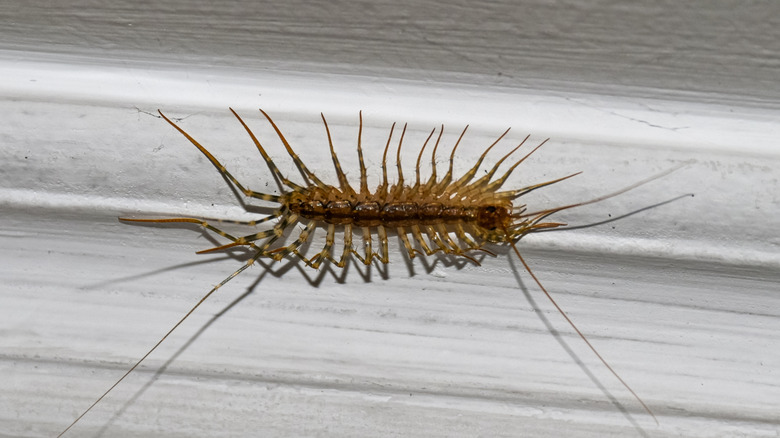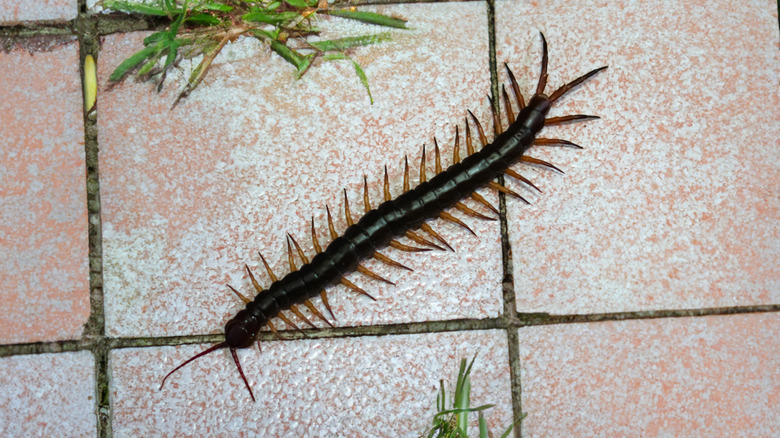The Unexpected Reason You Should Never Squash A Centipede In Your Home
Have you ever been washing your hands only to be startled by 15 pairs of legs moving an eerily long and slender body up through your drain? No, it's not an organic alien probe, that's a centipede. Let's face it, your first reaction might be to scream and/or jump out of your skin. Then, you're likely to reach for something to put the centipede out of "your" misery. What you might not realize, though, is that killing house centipedes actually puts you at a disadvantage in your efforts to keep other pests at bay.
While centipedes are often perceived as pests because of their creepy appearance, they are considered beneficial arthropods. Just like why you shouldn't kill the spiders in your house, house centipedes eat many common insect pests, smaller arthropods, and other organisms, including ants, carpet beetle larvae, cockroaches, firebrats, silverfish, spiders, and termites. In fact, they don't eat human food at all — their diet is strictly bugs.
However, that's not the only reason you shouldn't squash house centipedes. These arthropods don't build nests or webs, so you don't have to clean up after them. Although it's possible, centipedes don't generally bite people either. Even when they do, the small ones can't penetrate the skin, and the larger ones only cause mild irritation that usually subsides within a few hours.
How to put centipedes back outside and keep them there
House centipedes aren't a threat to you or your household, but they aren't exactly the friendly looking animal you expect to see crawling around when you turn the corner. Although killing them isn't likely to release a horde of baby centipedes — we're looking at you, wolf spiders — it's better for your sanity and the arthropod's diet for them to go back outside and stay there.
To catch a centipede for safe release outdoors, grab a clear glass or plastic container that's big enough to fit over it without damaging its legs. Place the container over the centipede, and carefully and slowly slide a thin piece of cardboard or hard paper (something more substantial than printer paper) underneath both. If the centipede is in the corner of a wall or a difficult position to capture, you can use a broom to gently brush it into a better spot. After catching the centipede, you can release it outside — about 10 feet from your home — near some brush or bushes where it can find all the bugs it wants to eat.
Once you're centipede free, you can keep them from coming back by first keeping their source of food — common pests and other small organisms — out of your house, too. In fact, the presence of several centipedes could indicate an underlying pest problem that needs attention. You can also minimize humid environments in your home and seal the cracks and crevices that they use to crawl inside. Best of all, taking these steps will prevent other pests from getting in as well.

